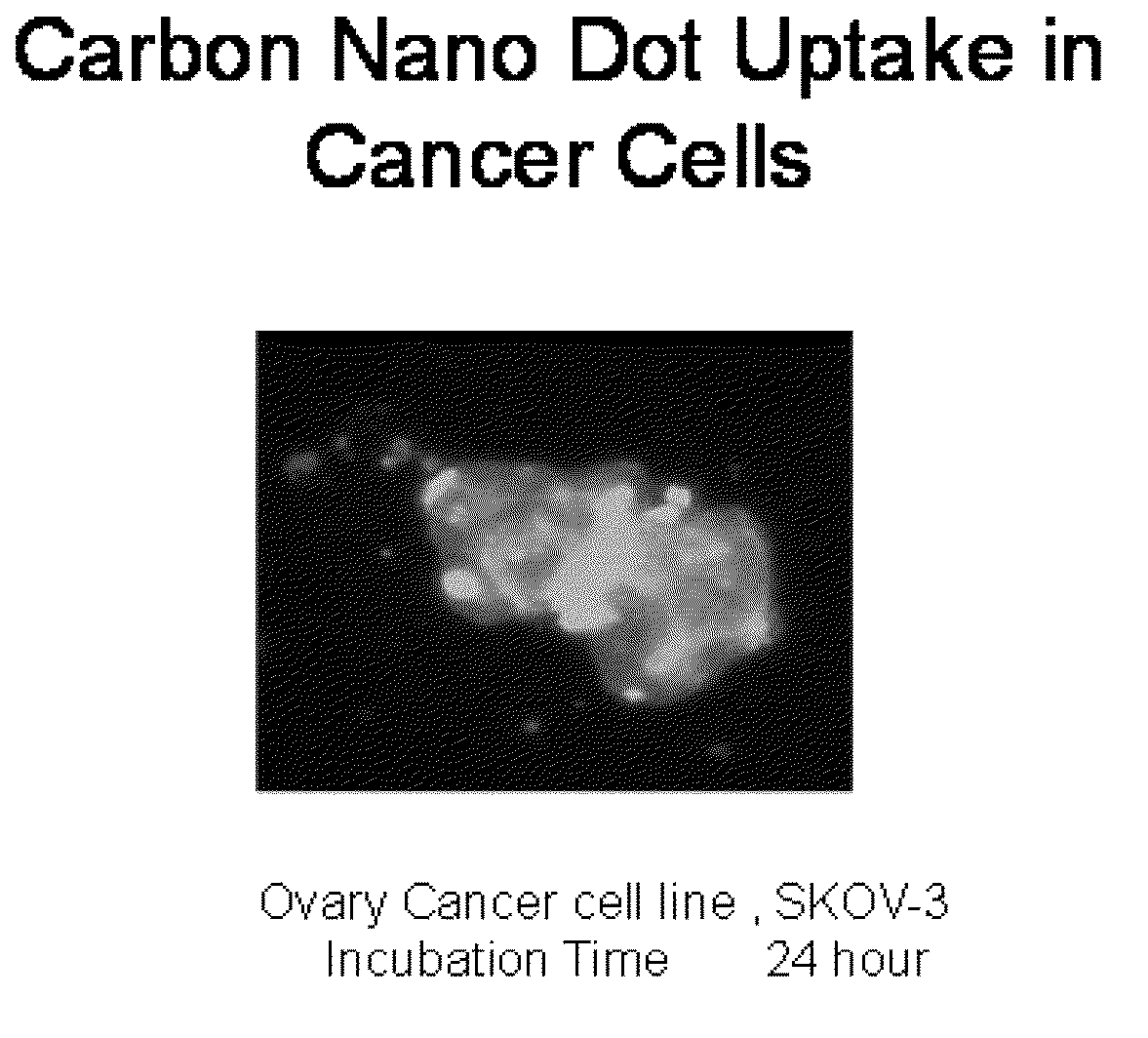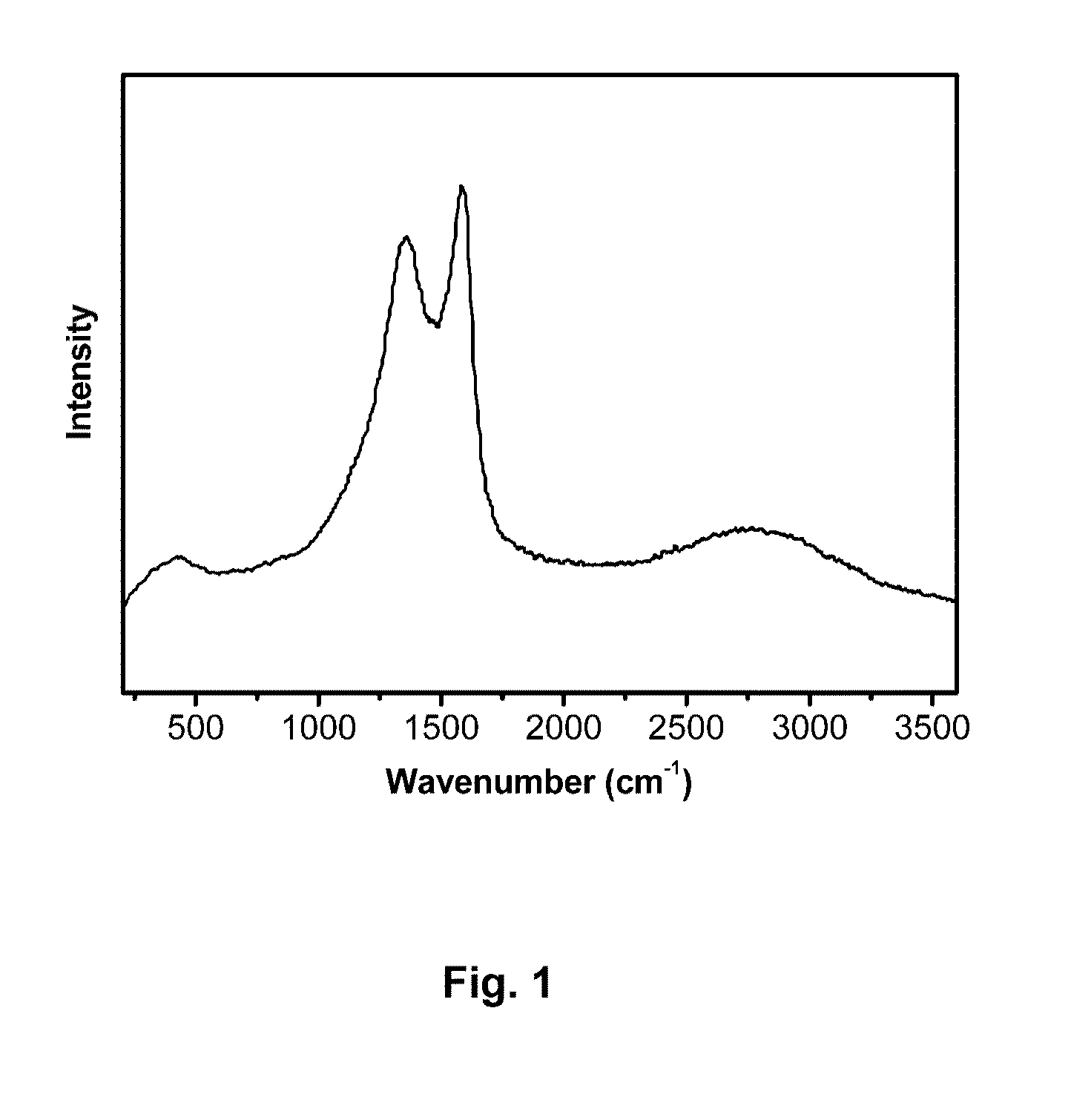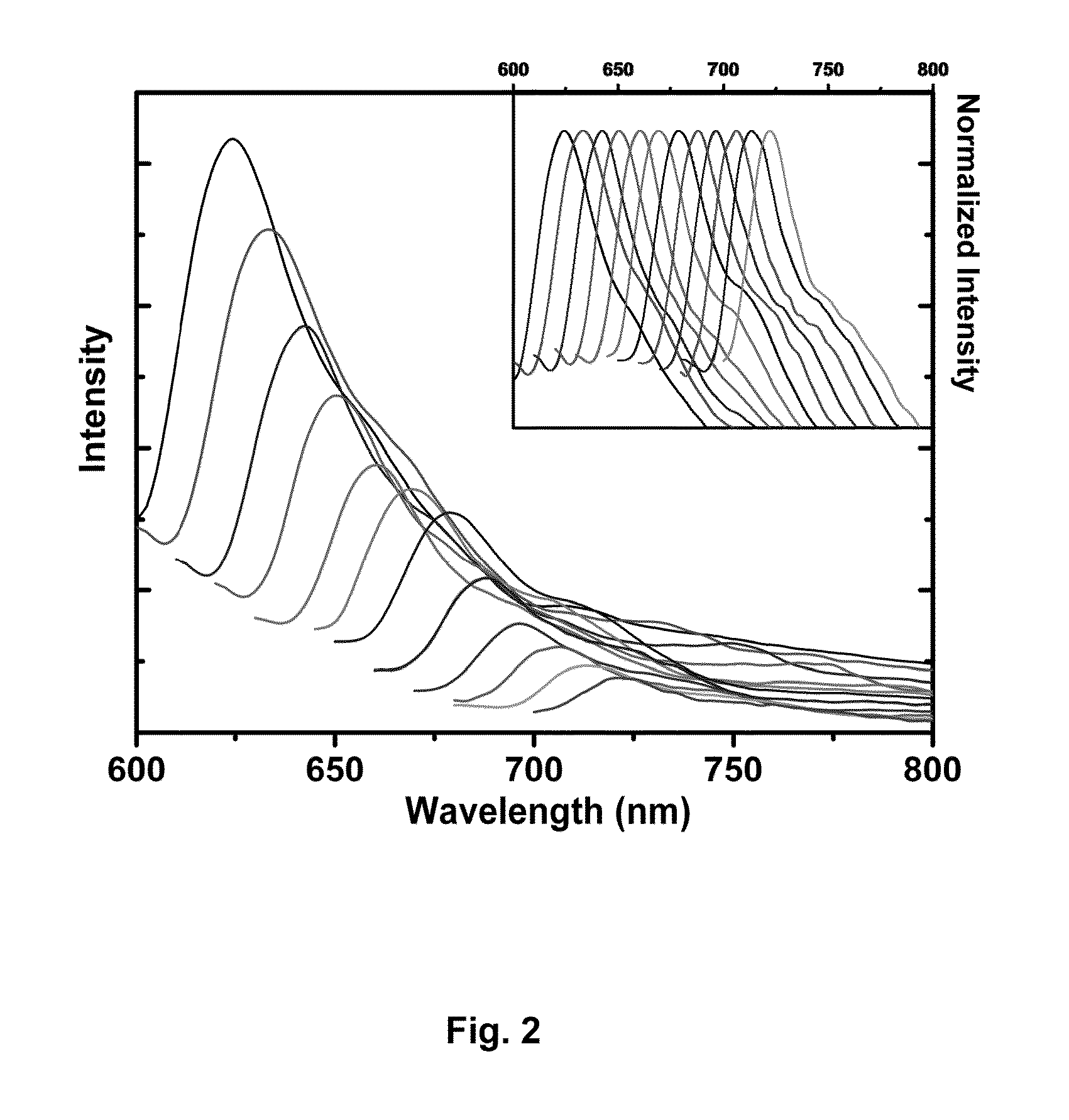Water soluble fluorescent quantum carbon dots
a technology of fluorescent quantum carbon dots and carbon dots, which is applied in the preparation of carboxylic compounds, instruments, organic chemistry, etc., can solve the problems of difficult mass production, not easy to consistently repeat, and none of these types of c-dots are capable of self-fluorescen
- Summary
- Abstract
- Description
- Claims
- Application Information
AI Technical Summary
Problems solved by technology
Method used
Image
Examples
example 1
Production of C-dot Containing Soot.
[0044]A bee's wax candle was lit and allowed to burn via its central cotton wick under normal open air conditions. Carbon soot is collected on a glass reflector plate, is fixed over the candle and repositioned as needed during the burning process. The temperature during this burning process was recorded and was about 600 degrees Centigrade during the entire process. The collected soot was then washed repeatedly with toluene, acetonitrile and ethanol by soxhlet method to free the soot from any unburnt hydrocarbon or fullerenes and then dried. The result was a mixture of nano tubes and C-dots.
example 2
Preparing Water Soluble of C-dots and CNT Nanotubes.
[0045]The C-dots from example 1 are treated with concentrated nitric acid and the mixture is allowed to stand for 24-48 hours under ambient room temperature and atmospheric pressure till the entire mass is dried. The mass was washed with cold distilled water and the black residue was suspended with distilled water and sonicated to dissolve the water soluble C-dots and water soluble CNTs. The mixture was filtered through bulk membrane filtration to remove most CNTs from C-dots. These C-dots were collected from the evaporated filtrate.
example 3
[0046]Separating after Soluble C-dots that Fluoresce.
[0047]The C-dots from example 2 were then treated with water and sonicated to dissolve and passed through membranes of sizes 0.45, 0.2 and 0.01 micrometer respectively. The separated filtrates were collected and evaporated to dryness under vacuum desiccators to yield C-dots of different sizes functionalized by carboxylic acid groups on the surface. The average yield of C-dots is from 400 mg to 900 mg of water soluble carboxylated mixture of C-dot and water soluble CNTs isolated from burning 50 grams of bee's wax. The resulting C-dots can fluoresce in a wavelength range of between 400 to 650 nm. The figures which follow display the analysis of the produced C-dots.
[0048]FIG. 1 shows a graph of the water soluble fluorescent carbon nano particles as quantum sized carbon dots (passed 0.20 micrometer membrane) showing D and G band with mixing of overtones around 2700 cm−1 in Raman Spectrum.
[0049]FIG. 2 shows the luminescence emission sp...
PUM
| Property | Measurement | Unit |
|---|---|---|
| Size | aaaaa | aaaaa |
| Size | aaaaa | aaaaa |
| Temperature | aaaaa | aaaaa |
Abstract
Description
Claims
Application Information
 Login to View More
Login to View More - R&D
- Intellectual Property
- Life Sciences
- Materials
- Tech Scout
- Unparalleled Data Quality
- Higher Quality Content
- 60% Fewer Hallucinations
Browse by: Latest US Patents, China's latest patents, Technical Efficacy Thesaurus, Application Domain, Technology Topic, Popular Technical Reports.
© 2025 PatSnap. All rights reserved.Legal|Privacy policy|Modern Slavery Act Transparency Statement|Sitemap|About US| Contact US: help@patsnap.com



